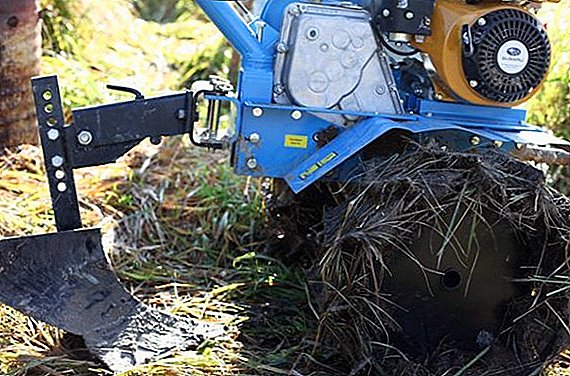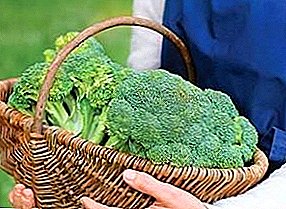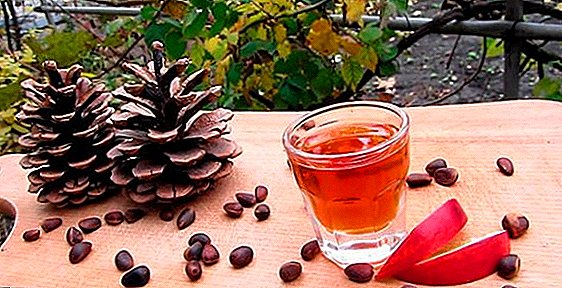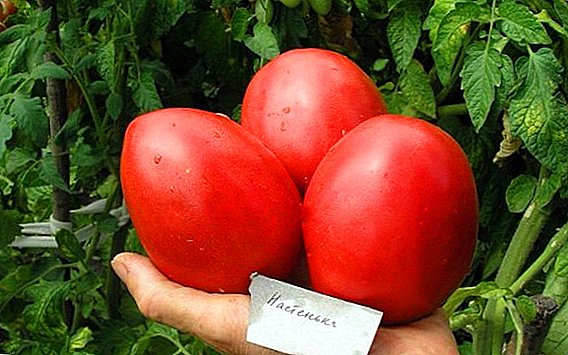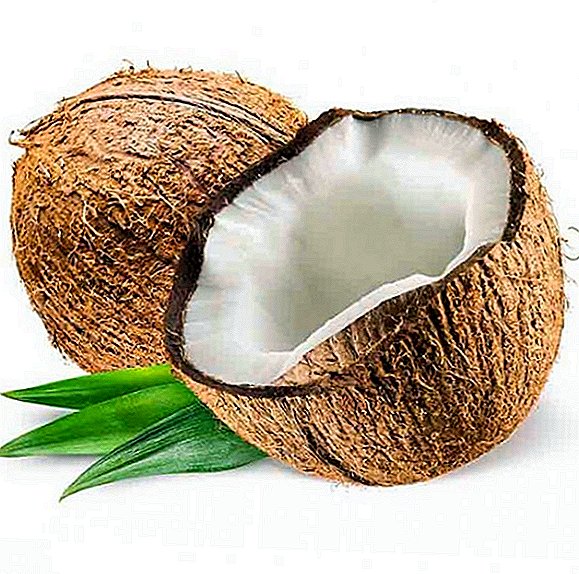 Coconut is a tropical delicacy, which is famous for its nutritional properties, unique taste and benefits for the whole body. This fruit, which grows on the hot ocean coasts, is effectively used in many spheres of human activity - we will consider its features in this article.
Coconut is a tropical delicacy, which is famous for its nutritional properties, unique taste and benefits for the whole body. This fruit, which grows on the hot ocean coasts, is effectively used in many spheres of human activity - we will consider its features in this article.
Calorie, BJU, vitamins and minerals
First of all, it is worth mentioning where coconut palms are most often found - these are Indonesia, Thailand, Brazil, Sri Lanka. Walnut consists of a hard shell, inner pulp and coconut water, or milk.
The contents of the nut has a lot of useful properties, is very nutritious and is effectively used for medical purposes. Coconut has a lot of chemical elements that have a positive effect on human health: the B vitamins, as well as K, C, E.
Did you know? Coconut is not a nut at all, as we traditionally call it. Coconut is a stone fruit, also called a stone fruit, and its close relatives are plum, peach and apricot.
It also has such macro and microelements as potassium, calcium, magnesium, iron, copper, sodium, phosphorus, zinc, selenium, and lauric acid. 
All this vitamin-mineral complex contains such amount of BJU (per 100 g of coconut pulp):
- calorie - 360 kcal;
- proteins - 3.33 g;
- fats - 3.49 g;
- carbohydrates - 15,23 g
Discover the beneficial properties of coconut milk and coconut chips.
100 g of coconut water contains:
- calorie - 16.7 kcal;
- proteins - 4 g;
- fats - 27 g;
- carbohydrates - 6 g

What is useful coconut for the body?
The healing properties of the coconut fruit are a real salvation for people suffering from such ailments:
- inflammatory processes, infections, viruses, bacteria - properties are manifested due to the lauric acid in the composition, which is also contained in the breast milk of the nursing mother;
- It has a beneficial effect on the nervous system because it contains a large amount of magnesium, boron and bromine. Also responsible for the absence of depression, because it contributes to the production of serotonin and endorphin;
- problems with the cardiovascular system;
- helminthiasis, especially milk;
- has a positive effect on the course and prevents the development of Alzheimer's disease;
- normalizes hormonal balance, prevents enlargement of the thyroid gland;
- promotes normal digestion, for example, heals ulcers, eliminates constipation;
- effective remedy for atherosclerosis;
- reliable protection and prevention of cancer;
- Beneficial effect on the joints.
Video: the beneficial properties of coconut
Important! Due to bactericidal properties coconut it does not rot, it is not afraid of moisture, it can maintain its elasticity and elasticity for several years if it does not have any deformations.
Women
Coconut effectively protects the female body from the occurrence of cancer, in particular, breast cancer. It is often used in the beauty industry, as it has a positive effect on the skin of the face and body.
Coconut oil eliminates the problems of oily skin: it is recommended to apply to problem areas, and it dries and normalizes the release of subcutaneous fat. Oil is often used as a tool to help get rid of wrinkles, and in adolescence is a fairly effective way to get rid of acne.  It has a good effect on the condition of the hair, improving their structure and appearance due to the fact that it provides the necessary nutrition. Coconut milk helps eliminate varicose veins. In cosmetology, it is used as a tool for removing makeup and skin care, as well as hygienic lipstick.
It has a good effect on the condition of the hair, improving their structure and appearance due to the fact that it provides the necessary nutrition. Coconut milk helps eliminate varicose veins. In cosmetology, it is used as a tool for removing makeup and skin care, as well as hygienic lipstick.
It is recommended for use by pregnant women to lighten pigment spots that occurred during carrying a child, to prevent stretch marks. It has a positive effect on the healing of postpartum injuries.
Men
Coconut milk can be used as a shaving cream, and then as a disinfectant after this process. Coconut eating is a powerful aphrodisiac that helps men build or increase their desire for intimacy with women.
Natural aphrodisiacs are also: actinidia, saffron, walnut grass, horseradish, strawberries, lychee, arugula, Lyubka bonster and walnut.
 In case of serious problems with the skin, for example, the appearance of eczema or psoriasis, coconut is an effective therapeutic tool. It also has a good effect on the joints, preserving their youth and mobility.
In case of serious problems with the skin, for example, the appearance of eczema or psoriasis, coconut is an effective therapeutic tool. It also has a good effect on the joints, preserving their youth and mobility.
Features of use
There are cases when the use of a particular product for food should be treated with extreme caution and increased attention. This is most often associated with age-related or specific health conditions, as well as diseases and allergic predisposition.
During pregnancy
In this particular period in the life of a woman, it is not only useful for her to eat coconut, but also can be effectively used as a cosmetic.  Coconut milk helps to increase the elasticity of the skin with an active change in the body of a pregnant woman, which in turn prevents the appearance of such unpleasant stretch marks on the body. To do this, it is necessary to systematically rub it with light massage movements in the area most susceptible to their appearance.
Coconut milk helps to increase the elasticity of the skin with an active change in the body of a pregnant woman, which in turn prevents the appearance of such unpleasant stretch marks on the body. To do this, it is necessary to systematically rub it with light massage movements in the area most susceptible to their appearance.
Breastfeeding
During lactation, women are advised to drink a few spoons of coconut milk to increase the nutritional value of breast milk. Rich vitamin and mineral composition will contribute to the normalization of breastfeeding and make it more complete.
And coconut milk can relieve irritation of the delicate skin of the nipples with intensive breastfeeding and during the period when teeth start to cut at the baby.
When losing weight
Despite the high calorie content of coconut pulp, its milk is a low-calorie product.  In addition, the moderate use of coconuts helps to improve metabolism and normalizes the digestive system and therefore is an excellent tool for weight loss.
In addition, the moderate use of coconuts helps to improve metabolism and normalizes the digestive system and therefore is an excellent tool for weight loss.
Improving metabolism also contributes to the use of black radish, cherry, red pepper, hellebore and bee perga.
With diabetes
People suffering from diabetes should be wary of eating this product. So, for example, the pulp of the fruit is allowed to eat in limited quantities, and coconut oil is prohibited.
When gastritis
In case of diseases of the digestive system, in particular, gastritis, as well as ulcers, etc., moderate coconut should be used. It normalizes the intestinal microflora, can be used in the diet of people who have intolerance to cow's milk.
However, do not forget about the calorie content of the product: milk can overload the work of the stomach, and it will be difficult to cope with it, but at the same time, the fibers help to improve digestion. 
From what age can children
In those countries where coconut grows everywhere, children begin to introduce it to food rather early. Coconut milk contributes to the good work of the nervous system, soothes, eliminates hyperactivity in children.
It contributes to the active development of thinking, the full growth of a healthy and strong baby. Children living in countries where coconut palms do not grow can begin to introduce a new product for them, just like any other new product for the baby, in small quantities, watching the reaction of the child’s body.
How to choose a delicious coconut when buying
Choosing a coconut fruit is not usual for people living far from hot tropical countries, so it’s best to go to the store and purchase the desired delicacy to get acquainted with some tips that will help you make the purchase of the most delicious and high-quality coconut.
Video: how to choose the right coconut First of all, it is necessary to find out from the seller about when the delivery of this batch of coconuts was made. When choosing a coconut, you must take a few fruits in your hands and determine the one that will have the greatest weight: visually it should seem small.
This will mean that it contains a large amount of liquid, and it is a quality product. In addition, the nut can be a little shake - the sound of gurgling will be a good signal that you have a ripe fruit.
In case the coconut is very light and you do not hear the splashing and gurgling inside - this means that the fruit could have damaged the outer shell, and the liquid flowed out, or it was stored for quite a long time, and all the liquid evaporated. As a result, the pulp can have fungal lesions and a bad, spoiled taste.
Do not opt for deformed or damaged fruit. If there are cracks and dents, the tightness of the shell is broken, and hence the sterility of the pulp and milk - there can begin the processes of rotting and reproduction of bacteria.  You should also pay attention to the three points that are located on the pointed side of the fetus: one of them should be firmer than the other two. It is necessary to make sure that during the transportation process of the coconut the soft points were not damaged, as in this case the inside of the nut may contain mold.
You should also pay attention to the three points that are located on the pointed side of the fetus: one of them should be firmer than the other two. It is necessary to make sure that during the transportation process of the coconut the soft points were not damaged, as in this case the inside of the nut may contain mold.
Coconut fruit should not be wet. If you observe wet areas on a product, it may mean that there is a crack in it, and its contents gradually follow. Before use, you should inspect the inside of the coconut. The flesh should be of a uniform color and have a pleasant, not sharp smell.
It is worth noting that all these tips will help you determine the best quality product from those represented in the assortment of your store, but do not guarantee its excellent taste at all, since the transportation process takes quite a long time and requires compliance with certain conditions.  In addition, an externally ideal fruit may still be unusable if its flesh is of heterogeneous color and has an unpleasant taste.
In addition, an externally ideal fruit may still be unusable if its flesh is of heterogeneous color and has an unpleasant taste.
How easy it is to open
To open a coconut, we need a regular kitchen knife of a large size, preferably with a heavy handle and a wide blade, and one small knife with a narrow blade. First of all, you should take the coconut fruit and turn it up with the pointed side with 3 dark dots on top.
Selecting a point that stands out from the rest, we begin to pick it with a small knife. In this way, it will be possible to extract the coconut milk from the fruit. For disclosure, take a nut in one hand and a large, large knife in the other and begin to knock on the fruit with the flat side of the knife.
Video: how to open a coconut at home Tapping must be done by rotating the coconut in a circle in his hand. The process must continue for 1-2 minutes, all the time knocking the surface of the nut until you hear it crack. Next, you should continue to knock on the fetus, scrolling around its axis until a characteristic crack appears on the body.
Learn more about how to clean and clean coconut.
After the crack becomes of considerable size, you can try to open the coconut with your hands - make a small effort to break it into pieces.
Important! Some peoples living on the Pacific coast have a tradition of planting coconut palm when a baby is born in a family. They argue that his health can be judged all his future life by the state and growth of the tree.
 How easy it is to open
How easy it is to openHow and with what it is eaten
The pulp of the fruit in fresh or dried form is used to normalize the metabolic processes and strengthen the immune system. It is used in the preparation of pastries, puddings, appetizers, salads and cereals. Coconut milk often becomes one of the ingredients in the preparation of various desserts, beverages, sauces and soups.
Coconut is particularly advantageous with such products:
- chicken and rabbit meat;
- shrimp, squid and other seafood;
- cereals, for example, oatmeal, rice, pshenka;
- fruits - pineapple, banana, lemon, lime, strawberry;
- potatoes and peppers;
- spices - basil, mint, curry, cilantro;
- chocolate and caramel.

Did you know? Each coconut palm can grow and bear fruit for 100 years. Every year you can harvest 450 nuts in it.
How and how much can be stored open coconut
Coconut belongs to the category of products that can not be stored for a long time. A whole fruit can be in good condition no more than a month after it has been torn off, provided that it was kept in a dark and cool room.
An open nut can be kept in the refrigerator for no more than 2–3 days, since fermentation processes will begin to occur further in it, and it will sour. Coconut milk should be thoroughly cleaned before storage - there should be no shell fragments.
It is best to use it immediately after it has been extracted from the nut. If there is a need to keep it for a long time - it is placed in a tightly closed container.  The permissible storage period should not exceed 7 days. It can also be deep-frozen by immersing it in a freezer: this way the butter will retain its beneficial properties for 2 months.
The permissible storage period should not exceed 7 days. It can also be deep-frozen by immersing it in a freezer: this way the butter will retain its beneficial properties for 2 months.
Pulp of coconut should be poured with water and stored in the refrigerator for no more than a week. It can and freeze, but it should be noted that in this case, it can change its texture and become more loose.
We advise you to get acquainted with the beneficial properties of such nuts as pecans, hazelnuts, macadamia, cashews, pistachios, as well as Manchurian, pine, Brazilian and walnuts.
Dried coconut chips can be stored in a tightly closed container in a dry and cool place for almost a year.
Contraindications and harm
Coconut is practically harmless product, that is, using it in moderate quantities, you can not worry about what consequences may arise. 
Such a quantity of coconut pulp per day is considered safe:
- 300 g for men;
- 200 g for women;
- 50-100 g for children from 3-10 years.
If you eat more, there may be an overabundance of certain vitamins and minerals in the body, for example, selenium. Do not forget about the increased caloric content of the product, which can adversely affect the volume of the body of people who often consume this fruit.
In the case of diabetes, it is worth paying attention to the use of coconut milk. Also, some people may experience individual intolerance to the product, which is expressed as an allergic reaction.
Tropical walnut is able to quench thirst and hunger, it will become a highlight on your table, whether it is a festive dinner or a family holiday. 



